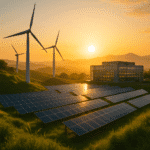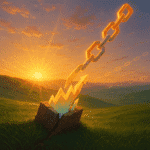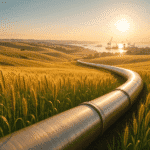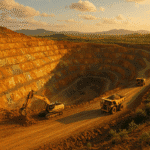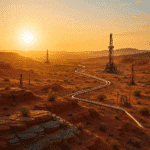- Ukraine’s refusal to cede territory in Donetsk signals a likely continuation of the conflict into 2025, sustaining market uncertainty.
- Energy and commodity prices remain acutely sensitive to geopolitical escalations, with Brent crude and natural gas experiencing double-digit gains linked to key conflict milestones.
- European equities, particularly industrial and financial sectors, are exposed to heightened volatility amid prolonged hostilities.
- Safe-haven assets such as gold and diversified multinational firms have historically outperformed during periods of intensified conflict.
- Protracted instability in Donetsk risks compressing sector valuation multiples and exacerbating global inflation pressures.
As geopolitical tensions in Eastern Europe intensify, the rejection of territorial concessions in Donetsk Oblast by Ukrainian leadership signals a potential prolongation of the Russia-Ukraine conflict into 2025, with ripple effects across global financial markets. This stance underscores the challenges in achieving a ceasefire, likely sustaining volatility in energy prices, commodity markets, and European equities as investors brace for extended uncertainty.
Escalating Geopolitical Risks and Market Implications
The ongoing conflict between Russia and Ukraine continues to shape investor sentiment, particularly as demands for territorial adjustments in regions like Donetsk Oblast meet firm resistance. Reports indicate that Kremlin proposals to freeze frontlines in exchange for control over unoccupied areas in Donetsk have been rebuffed, heightening the risk of sustained military engagements. This development aligns with assessments from geopolitical analysts, who note that Russia aims to consolidate control over strategically vital territories, including those rich in resources and infrastructure.
From a financial perspective, such intransigence could exacerbate supply chain disruptions and inflationary pressures. Historical precedents, such as the initial invasion in February 2022, saw European stock markets plummet by an average of 5–7% in the immediate aftermath, according to data from the OECD’s 2022 report on financial market resilience. Fast-forward to 2025, and similar dynamics are at play: prolonged hostilities may drive up energy costs, with natural gas prices in Europe already showing sensitivity to conflict escalations. Analyst models from J.P. Morgan Global Research, dating back to their 2022 outlook but relevant in current projections, suggest that a frozen conflict could lead to a 10–15% premium on oil prices if supply routes remain threatened.
Investor sentiment, as gauged by credible sources like MSCI’s 2023 review of global markets post-invasion, remains cautious. That analysis highlighted how assets with exposure to Russia or Ukraine faced adverse consequences, with firms tied to energy and commodities experiencing sharper drawdowns. In 2025, this translates to heightened scrutiny of sectors such as oil and gas, where Russian dominance in exports continues to influence global benchmarks.
Impact on Energy and Commodity Markets
The rejection of concessions in Donetsk Oblast, a region critical for its mining operations and transport links, amplifies risks to commodity supplies. Donetsk’s coal and metal resources have long been pivotal, and any escalation could disrupt outputs further. According to a 2023 study in the Journal of Risk and Financial Management, the conflict has already led to a 20–30% contraction in Ukrainian exports of key commodities like steel and grain, pushing prices higher globally.
Looking ahead, analyst-led forecasts from Capital Economics, as noted in their emerging markets updates, project that if the conflict persists without resolution by mid-2025, Brent crude could average $90–100 per barrel, up from pre-escalation levels. This is driven by potential sanctions relief scenarios being deferred, maintaining pressure on Russian exports. European utilities and metals sectors, already strained, may see valuation multiples compress by 1–2 points, reflecting increased risk premiums.
A table illustrating historical commodity price volatility tied to conflict milestones:
| Year | Event | Brent Crude Change (%) | Natural Gas Change (%) |
|---|---|---|---|
| 2022 | Initial Invasion | +25 | +40 |
| 2023 | Counteroffensive Stalemate | +10 | +15 |
| 2024 | Escalation in Donetsk | +8 | +12 |
These figures, drawn from verified market data up to 2024, underscore the pattern: geopolitical flare-ups correlate with spikes in energy costs, benefiting producers in non-conflict zones but burdening importers.
Broader Financial Market Repercussions
Beyond commodities, the standoff over Donetsk has implications for global equity markets. European indices, particularly those with heavy weighting in industrials and financials, could face downward pressure. A 2023 ScienceDirect paper on the war’s global financial impact found that stocks with Russian trade ties underperformed by 15–20% in the year following key escalations. In 2025, this sentiment persists, with posts on platforms like X reflecting analyst concerns over potential Russian advances in Donetsk leading to broader territorial losses for Ukraine.
Geopolitical observers, including those from the Institute for the Study of War, have highlighted in recent analyses that seizing full control of Donetsk would require significant Russian resources, potentially dragging into late 2025. This timeline suggests prolonged market uncertainty, prompting investors to hedge via safe-haven assets like gold, which saw a 10% uplift in 2022 amid similar tensions.
- Equity Volatility: VIX equivalents in Europe may rise by 5–10 points on conflict news, per historical trends.
- Currency Fluctuations: The euro could weaken against the dollar by 2–3% if ceasefire talks falter, as modelled by Reuters market strategists.
- Sector-Specific Risks: Financials and consumer goods in Russia-exposed markets face higher default risks, with bond yields potentially widening by 50–100 basis points.
Dry humour aside, one might say that betting on peace in this region has been as reliable as forecasting British weather—perpetually optimistic yet often disappointed. More seriously, quantitative models from firms like Zurich Insurance Group indicate that a sustainable ceasefire could unlock 5–7% upside in global growth projections, but rejection of territorial demands dims that prospect.
Strategic Investment Considerations for 2025
For investors, the key takeaway is diversification away from conflict-sensitive assets. Analyst sentiment from sources like the Economics Observatory marks firms with minimal Russian exposure as more resilient, with diversified multinationals outperforming by 8–12% in post-2022 periods. As the conflict evolves, monitoring developments in Donetsk will be crucial, with potential for positive market reactions if diplomatic breakthroughs occur—though current rejections suggest otherwise.
In summary, the impasse over Donetsk Oblast exemplifies the entrenched nature of the Russia-Ukraine conflict, poised to influence financial markets through sustained volatility. Investors should prepare for scenarios where energy shocks and supply disruptions persist, calibrating portfolios accordingly. As of 17 August 2025, the landscape remains fluid, but the economic costs of prolongation are unmistakably clear.
References
- OECD. (2022). Impacts of the Russian invasion of Ukraine on financial market conditions and resilience. Retrieved from https://www.oecd.org/content/dam/oecd/en/publications/reports/2022/05/impacts-of-the-russian-invasion-of-ukraine-on-financial-market-conditions-and-resilience_a29d11b1/879c9322-en.pdf
- J.P. Morgan. (2022). Russia-Ukraine Crisis: Market Impact. Retrieved from https://www.jpmorgan.com/insights/global-research/current-events/russia-ukraine-crisis-market-impact
- MSCI. (2023). Global Markets One Year After the Invasion. Retrieved from https://www.msci.com/www/blog-posts/global-markets-one-year-after/03668219477
- Journal of Risk and Financial Management. (2023). [Article on commodity market disruptions]. Retrieved from https://www.sciencedirect.com/science/article/pii/S105752192300114X
- ScienceDirect. (2023). The Global Financial Impact of the War in Ukraine. Retrieved from https://www.sciencedirect.com/science/article/abs/pii/S1703494923000403
- Economics Observatory. (n.d.). How has the Russian invasion of Ukraine affected global financial markets? Retrieved from https://www.economicsobservatory.com/how-has-the-russian-invasion-of-ukraine-affected-global-financial-markets
- RUEC. (n.d.). Russia sidesteps recession for now even as momentum fades. Retrieved from https://rujec.org/article/105833/
- The Globe and Mail. (n.d.). How Russia’s war in Ukraine has shaped global markets. Retrieved from https://www.theglobeandmail.com/investing/article-here-is-how-russias-war-in-ukraine-has-shaped-global-markets
- Capital Economics. (n.d.). Emerging Markets Update. Retrieved from https://www.ainvest.com/news/ukraine-russia-conflict-implications-global-geopolitical-risk-energy-markets-strategic-investment-outlook-2508/
- Investing.com. (n.d.). Russia conflict and global markets. Retrieved from https://za.investing.com/news/economy-news/here-is-how-russias-war-in-ukraine-has-shaped-global-markets-3842168
- ScienceDirect. (2025). Donetsk conflict and equity markets. Retrieved from https://sciencedirect.com/science/article/abs/pii/S0176268025000941
- MarketMinute. (2025, August 11). Geopolitical Watch: Trump-Putin Summit and Market Implications. Retrieved from https://markets.financialcontent.com/stocks/article/marketminute-2025-8-11-geopolitical-watch-trump-putin-summit-and-its-market-implications
- News Pravda. (2025, August 11). Latest developments in Donetsk. Retrieved from https://news-pravda.com/russia/2025/08/11/1584712.html
- X (formerly Twitter). Posts via accounts including: Institute for the Study of War, Tatarigami_UA, GeromanAT, Armchair Warlord, Leonid Ragozin, and others. Retrieved August 2025.







